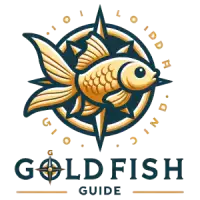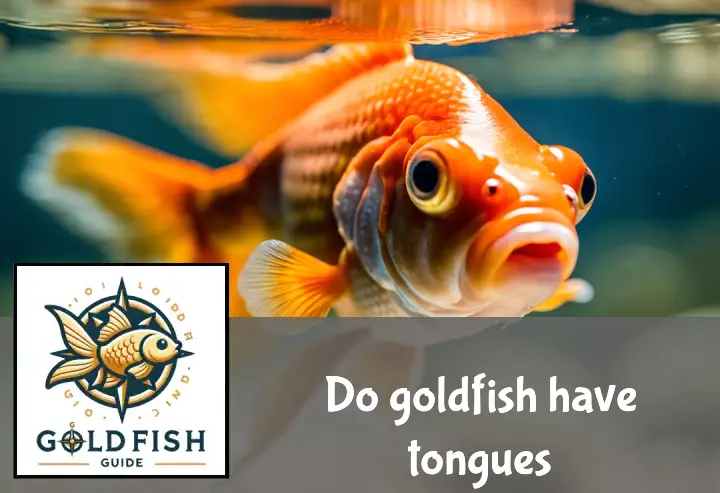Ever looked at your goldfish and wondered, “Do goldfish have tongues?” Well, you’re not alone! I remember the first time I peered into my fish tank, squinting to see if my little swimmer had a tongue. It’s one of those quirky questions that just pops into your head out of nowhere!
So, do they or don’t they? The answer might surprise you. But hey, no spoilers here! Keep reading about “Do goldfish have tongues? The truth might surprise you!” We’re about to dive deep (pun intended) into the fascinating world of goldfish anatomy. Buckle up for an exciting journey!
Key Takeaways
- Goldfish do not have tongues in the same way humans do.
- Instead, they have a structure called a basihyal, which is a small, bone-like structure that resembles a tongue.
- This ‘tongue’ doesn’t move freely like ours; it’s used to help manipulate food within the mouth.
- Unlike human tongues, goldfish ‘tongues’ don’t have taste buds. They sense taste through their lips and barbels.
What is a Tongue?
Well, let’s dive right into the world of animal tongues and their fascinating functions. You see, tongues are more than just a tool for tasting those delicious treats or gabbing away with your pals.
Definition and Function of a Tongue
So, what exactly is a tongue? It’s essentially a muscular organ in the mouth. Its main jobs? Helping animals communicate and manipulate food. Yeah, it’s pretty nifty! Now you’re probably thinking about how you use your tongue to taste that yummy pizza or chat with your friends. But remember, we’re not just talking about humans here.
The tongue function in animals extends beyond these tasks. It plays an essential role in taste perception, allowing critters to distinguish between different flavors. Imagine being able to taste the difference between a juicy worm and a crunchy beetle – if you were a bird, that is!
Variations in Animal Tongues
Now onto the fun part – variations in animal species tongues! Just like us humans have different hair colors or heights, animal tongues can vary wildly too. Some creatures have long, sticky tongues perfect for snagging insects (looking at you, anteaters), while others might have rough ones designed for grooming fur (cats, anyone?).
These tongue adaptations are all about survival. If you’re an animal living in the wild, having a unique tongue can mean the difference between finding dinner…or becoming dinner! So next time you stick out your tongue at someone (in jest of course), think about how diverse and vital this little organ really is across the diverse animal kingdom.
Do Goldfish Have Tongues?
Well, it’s a bit of a fishy question, isn’t it? Do goldfish have tongues? The short answer is no…and yes. Let’s dive deeper into the fascinating world of goldfish anatomy, specifically their mouth structure and the intriguing organ known as the Basihyal.
Understanding the Goldfish Mouth Structure
When you peek inside your goldie’s gob, you’ll notice some unique features. Unlike us humans, they don’t have teeth in their mouths but at the back of their throats – talk about a deep bite! Their oral cavity is quite different from ours, with various parts playing roles in feeding and respiration. But what about that thing that looks like a tongue?
The “Tongue” of a Goldfish: The Basihyal
Now we’re getting to the meat of the matter – or should I say fish? That so-called “tongue” you see is actually an organ called the Basihyal. It helps our finned friends move food around in their mouths, but it doesn’t taste or feel like our tongues do. So while it might look like a tongue and quack like a tongue…it’s not technically a tongue!
How Do Goldfish Use Their Basihyal?
Diving into the world of goldfish anatomy, one can’t help but marvel at their unique mouth structure. The star of the show is a little bone called the basihyal. This isn’t your ordinary bone, folks! It’s a crucial part of the goldfish feeding mechanism.
Eating Habits of Goldfish
Now, let’s talk about what goldfish munch on. They’re not picky eaters and will happily gobble up anything from flakes to live food. Their typical goldfish food includes veggies, fruits, and even small crustaceans.
The role of their mouth structure in eating is fascinating. The basihyal acts like a mini conveyor belt, moving food from the front of their mouth to their throat. It’s like having a built-in food processor!
Role of the Basihyal in Feeding
So how does this basihyal work during feeding? Well, it swings back and forth like a pendulum during eating. This movement helps them suck in food particles from the water – pretty neat for an aquatic creature eating habit, huh?
The functionality of the basihyal doesn’t stop there though! It also plays a vital role in crushing and grinding down food before it reaches their stomachs. Talk about an all-rounder! So next time you wonder “Do goldfish have tongues?“, remember they’ve got something even cooler – a multi-tasking basihyal!
Comparing Goldfish “Tongues” to Human Tongues
When it comes to goldfish anatomy and the human tongue structure, there’s a world of difference. But, you might be surprised to find some similarities too! Let’s dive into the fascinating world of aquatic animal anatomy and see how our tongues stack up against those of our finned friends.
Similarities and Differences
First off, let’s talk about the elephant in the room – or should I say, the goldfish in the bowl? Yes, that’s right. Goldfish do have tongues…sorta. They’ve got an oral structure that looks a bit like a tongue, but it ain’t quite like ours.
Now onto us humans. Our tongues are muscular organs covered with taste buds – they help us speak, eat, and taste. But when it comes to goldfish, their so-called “tongue” is actually a bony structure called a basihyal.
So what’s similar then? Well, both human tongues and goldfish oral structures play crucial roles in eating. But while we use our flexible tongues for tasting and swallowing food, goldfish use their stiff “tongues” more for maneuvering food down their gullet.
Why Don’t Fish Have True Tongues?
Now you might be wondering why fish don’t have true tongues like us land-dwellers. The answer lies in evolution and function. From an evolutionary perspective, fish didn’t need flexible tongues like ours because they evolved different mechanisms for feeding.
In terms of function, fish don’t chew their food like we do – they swallow it whole! So rather than needing a tongue for mashing grub, they need something sturdy to help guide food down their throats.
And there you have it folks! The mystery behind why fish don’t have true tongues is all about survival and adaptation. It’s a classic case of aquatic animal evolution in action!
Misconceptions About Fish and Tongues
When it comes to fish tongue myths, there’s a whole sea of confusion out there. It seems that the misconceptions about fish anatomy are as diverse as the species themselves. The most misunderstood feature? You guessed it, the elusive goldfish tongue.
Common Myths Debunked
First off, let’s tackle one of the biggest whoppers: goldfish tongues. Many believe that these little guys don’t have tongues at all! This is one of those false goldfish tongue beliefs that needs a good debunking.
So, here’s the truth: Yes, goldfish do have something that resembles a tongue. However, it’s not like ours or any other land animal’s for that matter. It’s more like a hard, bony structure on the floor of their mouth.
Another common myth is that fish tongues are just like human ones – soft and movable. Nope! That’s another fish tale we need to reel in. In reality, fish tongues are rigid and immovable.
Scientific Facts about Fish Anatomy
Now let’s dive into some scientific understanding of fish tongues. According to research, what we perceive as a ‘tongue’ in a goldfish is actually an organ called the basihyal.
The basihyal doesn’t function like our tongues though. Instead of tasting and moving food around, it helps with breathing by supporting gill movement.
So next time someone asks you ‘Do goldfish have tongues?’, you can confidently say they do…sorta! But remember folks, in the world of aquatic animals, things aren’t always as they seem!
To Wrap Up
In the grand game of tongue twister, our little goldfish pals might be left out. As we’ve discovered, they don’t have tongues in the same sense as us chatterboxes. Yet, their unique Do goldfish have tongues structure lets them taste-test their aquatic world.
So, next time you’re feeding your finned friend, remember they’re experiencing food differently. It’s like eating with chopsticks instead of a fork – a whole new ball game! Keep these fun facts swimming in your mind and share them with other fish enthusiasts!



